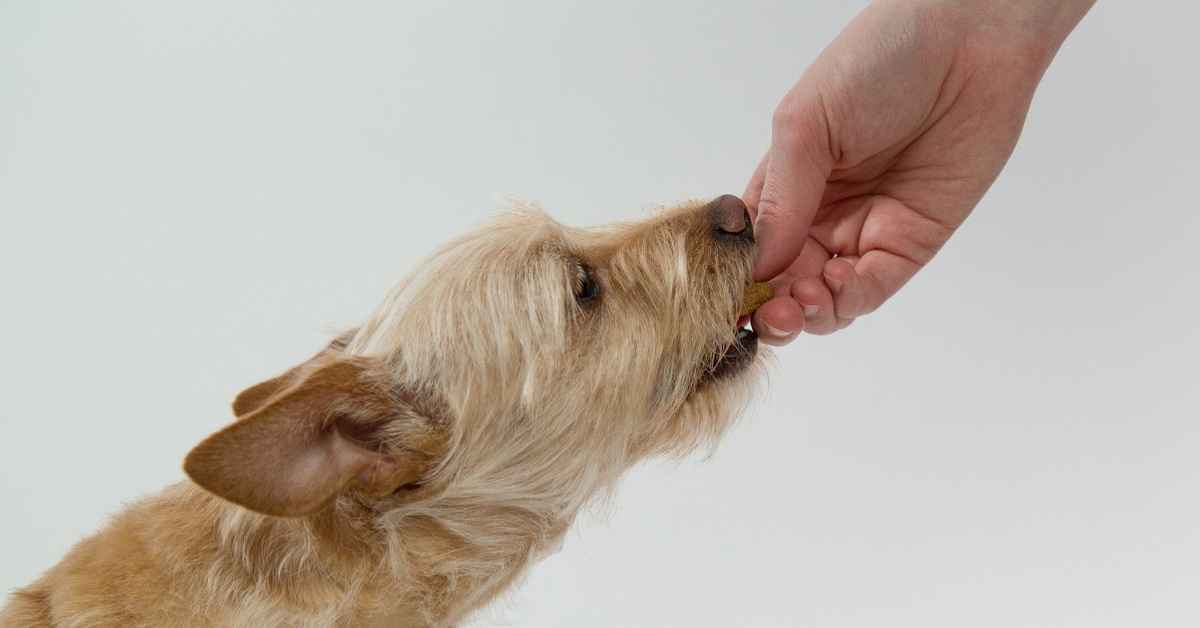Updated November 29, 2020
If you’re like most of us you struggle to work out how much food your dog needs. Even vets get caught out with their dogs getting too thin or fat.
Every single dog owner struggles with the same problem.
Why Is It Hard To Feed Dogs The Right Amount?
- Package guidelines are hopelessly inaccurate. I don’t think it’s to sell more food; I think the companies set a high level so no dog will starve. That means some get way too much.
- Amounts change during a dog’s lifetime. A 4-5 month old puppy will eat around twice as much as a two year old, and a three year old usually needs more than a ten year old.
- Amounts vary between dogs. My Jack Russell Terrier needs twice as much as my Border Terrier.
- Most dogs always act ‘hungry’. It’s a survival strategy developed in wolves: eat a lot when the food is there and you’ll survive when it isn’t.
- Exercise doesn’t seem to make a difference. Weird, huh?
Do Dogs Feel Hunger?
Notice I didn’t say dogs are always hungry, I said they act hungry. Here’s how it may work:
- Dog looks at owner without ‘hungry look’ = no food, no reward.
- Dog looks at owner with ‘hungry look’ = behaviour rewarded & reinforced.
- Dog gives ‘better hungry look’ = behaviour rewarded more strongly.
- Over time the ‘hungry look’ gets fine-tuned like this without a dog necessarily even being aware of what the look is or means.
All we can say for sure is that your dog wants food. We don’t know if dogs feel hunger at all. Hunger would serve little purpose for an opportunistic scavenger and hunter like the wolf. It makes more sense for a human who has control of the food supply.
To call a dog ‘hungry’ is a concept psychologists call anthropomorphism or humanisation. It’s like projecting our thoughts into the minds of our dogs. We all do it but it’s good to recognise when.
So if our dogs won’t tell us, how do we do it?
How To Tell How Much To Feed Dogs
- Find the switch for your emotions and turn it to ‘off’. Do the same for the rest of your family.
- Use the dog food’s instructions as a starting amount only. They are often fairly accurate in young puppies.
- Measure this amount using scales or a standard scoop and feed.
- Switch emotions back to ‘on’. Give play walks, cuddles etc but no snacks.
- If using treats for training, reduce the meal beforehand.
- Assess condition or weight weekly. Read how to check your dog’s body condition here.
- Adjust the amount you feed based on your results.
- Weight going up = reduce food by 10-20%; weight going down = increase food by 10-20%.
- Repeat.
This is what it’s like to care for a dog. A good dog owner doesn’t keep their dog’s weight on a flat line- that’s impossible. What they do is keep their dog’s weight in a narrow band, usually only 5-10% of their body weight (for example, a dog at 20kg ideal weight would fluctuate between 19.5 and 20.5 without a problem, and even from 19-21kg if not arthritic).
It’s really that easy. In healthy non-breeding adults you may only need to assess body condition monthly.
If you find assessing fat levels hard, get us or your breeder to do it for free. Once your dog is at an ideal condition, record the weight and use that as your benchmark instead. Use our waiting room scales whenever you like.
We love people who are already thinking about their dog’s body condition. It’s the only way to success.
For more about dog food amounts with a few doggy examples including my own, read an old blog called Myth #24 You feed a dog by following the instructions
Have something to add? Comments (if open) will appear within 24 hours.
By Andrew Spanner BVSc(Hons) MVetStud, a vet in Adelaide, Australia. Meet his team here.


Thank you. I live in nsw with my 14 year old female Spoodle. I prefer to make my own meals for her. And have been following your raw food diet ( only cooked)
Not sure how much longer I’ll have with her. On heart meds and I think has a touch of dementia; arthritis and is now deaf. Nothing wrong with her nose though. Cheers Roma in Urunga
I just wanted to say I love all the information on your website so much and how you reference literature with the information provided. I’m so sad you’re not in Sydney! I’d love to be able to bring my Kelpie to a vet that clearly has a lot of knowledge and experience.
This post has been a revelation to me, thank you Andrew. Our dogs have been on a diet with mild calorie restriction. Our herding dog seems to have gotten hungrier and hungrier. But it seems that what’s actually happened is, he’s trained us to reward his performance of hunger with more kibble, and we’ve reinforced this performance, in an ever-escalating scenario of request and response? It seems so obvious when you state it so clearly!